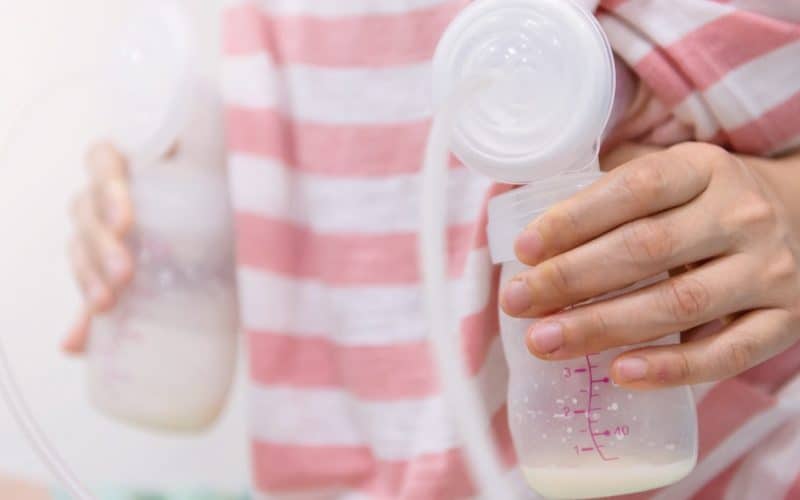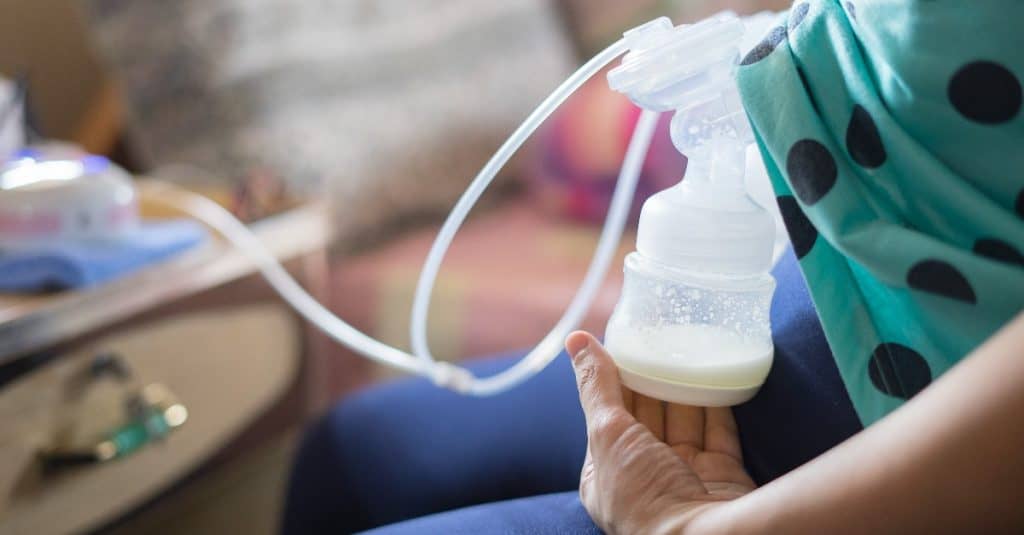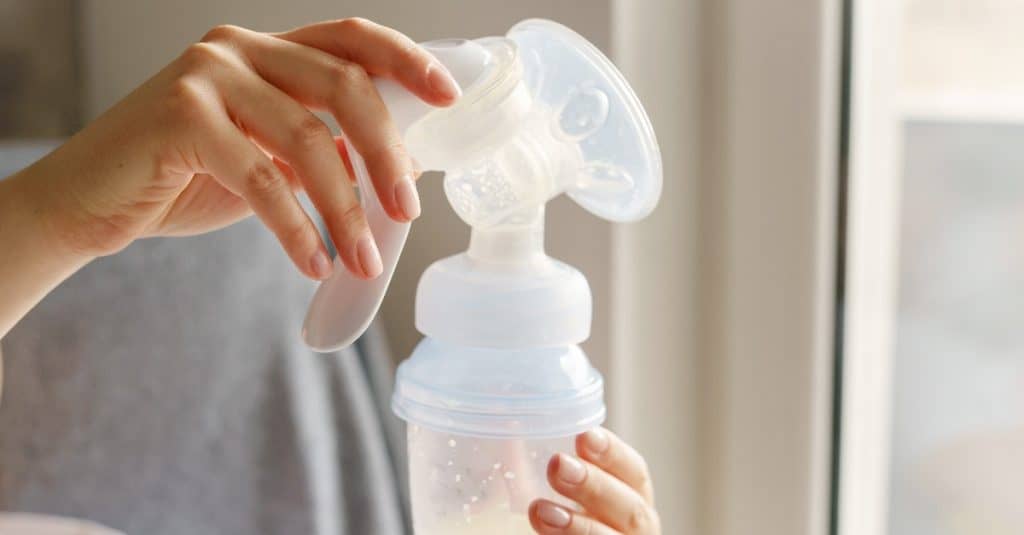Breastfeeding can offer your newborn the nutrients and immune support they need for a healthy start. It can also help create a unique bond with your child from the moment they are born.
As you embark on your breastfeeding journey, you will discover no two experiences are the same. While you understand the benefits of nursing your new baby for the first few months of their life, you also know you’ll encounter difficulties and setbacks.
Navigating the issues that come up may prove tricky; however, with the right resources in place, you can ensure you’ll get back on track despite the obstacles and provide your child with the best nourishment possible.
One such issue arises when your breasts are not responding to your pump anymore. While experiencing fullness without yield can be frustrating, and painful, there are actions you can take to remedy each of the possible causes for this issue.
Causes and Remedies When Breasts are Not Responding to Pump
-
Struggling with Let-Down
Let-down is the term associated with the natural reflex that results in milk being released from the breast. This reaction happens when your baby stimulates your breasts’ nerves by sucking on them.
This stimulation releases hormones, such as prolactin and oxytocin, into your bloodstream. Prolactin stimulates milk production, while oxytocin causes the breasts to “let down” the milk.
Causes
When you experience stress, sleeplessness, anxiety, pain, cold, consume excessive amounts of caffeine, or take certain medications, you may find you struggle with let-down.
Something as simple as your baby fussing and pulling away from your breast due to a slow let-down can cause you to tense up and restrict milk release even further.
The good news is that you can play an active role to help improve breastmilk release.
Remedies
- Relaxing and holding your baby close, or even thinking of your baby, can release oxytocin. When pumping between feedings, snuggle with your baby. Skin-to-skin contact can do wonders.
When you are away and trying to pump, watch a video, look at a photo, or take an item of clothing or blanket your baby has used in a zip-lock bag. Smell and touch it when you’re ready to pump to help you get those feel-good hormones.
- Taking a warm shower or bath before pumping can help you relax. Close your eyes and take some deep breaths. Don’t think about your frustration at not being able to pump. Instead, visualize your milk flowing and nourishing your baby.
- Choose a calm, relaxing environment for pumping, away from distractions. If it helps, play some music that helps you relax or lightens your mood. Singing and humming may help as well.
- Gently massaging your breasts and nipples to mimic your baby’s suckling before pumping may help as well as applying a heating pad on your shoulders or back. Getting a massage while you breastfeed, or pump may also prove beneficial.
- Switching breasts while your baby nurses may also help keep your milk flowing. And don’t forget to drink plenty of liquids.
-
Breast Infection and Blocked Milk Ducts
Breast infection, also known as mastitis, can happen suddenly. During breast infection, you may experience:
- Thickening of breast tissue or a bump
- Swelling, redness, and tenderness
- Continuous pain or burning sensation, or while nursing
- Fever of 101 F (38.8 C) or higher with chills
Causes
The most common cause of infection is milk trapped in the breast, which can lead to blocked milk ducts. This typically happens when the breast doesn’t empty during feedings, and it backs up.
Infection can also happen when bacteria from your skin’s surface, your baby’s mouth, or a dirty pump enters your breast ducts through a crack in the nipple’s skin. Any stagnant milk in the breast provides welcome nourishment for bacteria to thrive.
Risk Factors
- Previous mastitis, sore or cracked nipples, and pressure on your breasts from a tight-fitting bra, seat belt, or heavy shoulder bag can contribute to infection.
- Improper nursing techniques can also place pressure on your breast.
- Being overly tired or stressed and having poor nutrition, along with smoking can all lead to a weakened immune system making you more prone to infection.
Remedies and Prevention
- Antibiotics are typically the best course of action in the event of an infection. In the worst-case scenarios, the infection can cause the puss to collect, and the resulting abscess may require surgical drainage.
- To avoid infection, always fully drain your breasts of milk by allowing your baby to fully empty one breast before moving to the other.
- Changing feeding positions also prevents constant pressure in the same areas and ensure your baby is latching onto your breast properly. Improper latching can result in pain and potential injury.
-
Low Milk Supply
In some rare cases, some moms do not produce enough milk. However, most women can make one-third more milk than their baby is typically able to drink.
Women typically experience regular breast milk emptying during the first two weeks after delivery. It is at this time when new moms should nurse their babies or pump every three hours to get the best supply.
Causes for Low Milk Supply
- Poor latching or not latching right away may leave milk in your breasts. When this happens, your body may reduce its milk supply as it tends to adjust production to your baby’s feeding patterns.
- Your nipples may shrink over time which can lead to a poorly fitting breast pump flange. This can contribute to the reduction of milk production since your body will adjust to the low milk requirements.
- If you are not nursing or pumping often enough, your body will begin to produce less and less milk. Do not go longer than two to three hours without pumping. Remember, the more you express, the more you will make.
- When your baby goes through growth spurts, they may require more feedings. This may lead you to think you are not producing enough milk, when in fact your little one is only going through a high-milk-requiring growing phase. Once your little one goes through those phases, they will get back to their normal feeding patterns.
- Any underlying medical conditions, illness, or stress can lead to poor milk production. In some cases, this may be temporary. However, during serious illness or medical conditions, consult your doctor.
Remedies
- The mere act of pumping can lead to an increased milk supply. Therefore, it is important to pump between feeding sessions to stimulate milk production.
Power pumping, in which you pump for several minutes for one hour can also help. The goal is to mimic your baby’s cluster feeding. It is not meant to be a long-term solution. However, women typically notice an increase in milk production after doing daily power pumping over several days.
- Placing a heating pad on your breasts or taking a warm shower before expressing may help with blood circulation and may improve milk flow.
- Alternatively, massaging the breast area and hand expression may open up any clogged milk ducts and may help release oxytocin.
- Eat superfoods! Protein-rich foods, such as lean meat, eggs, dairy, beans, lentils, and low-mercury seafood can help increase milk production. Also, opt for whole grains and eat plenty of vegetables. And don’t forget to hydrate!
- Eat food that help increase milk supply naturally!
Final Thoughts
Breastfeeding your baby can be as rewarding for you as it is for them. Knowing that no nursing journey is the same and that you’ll encounter obstacles along the way may seem discouraging. However, knowing the type of issues that can happen and how to remedy them can give you some peace of mind.
Always remember to reach out to a lactation specialist and your doctor as they can be excellent resources when you’re going through difficult times.


